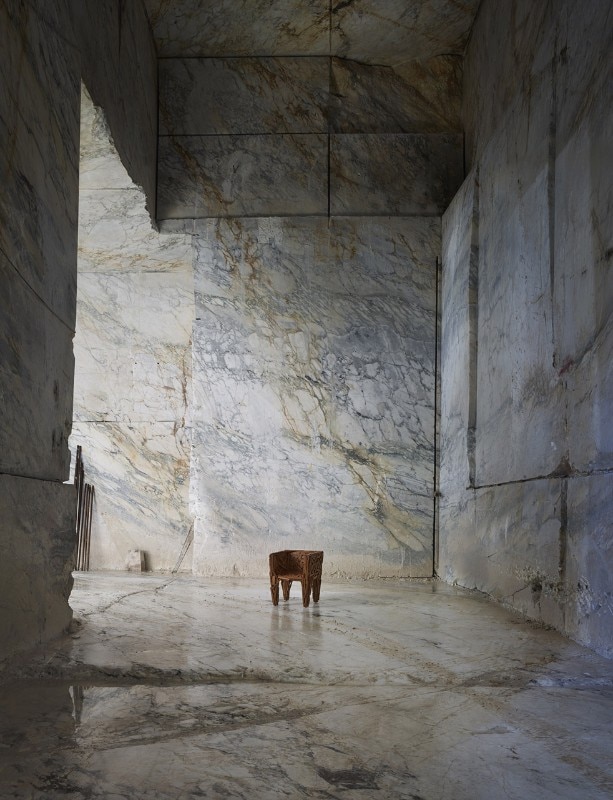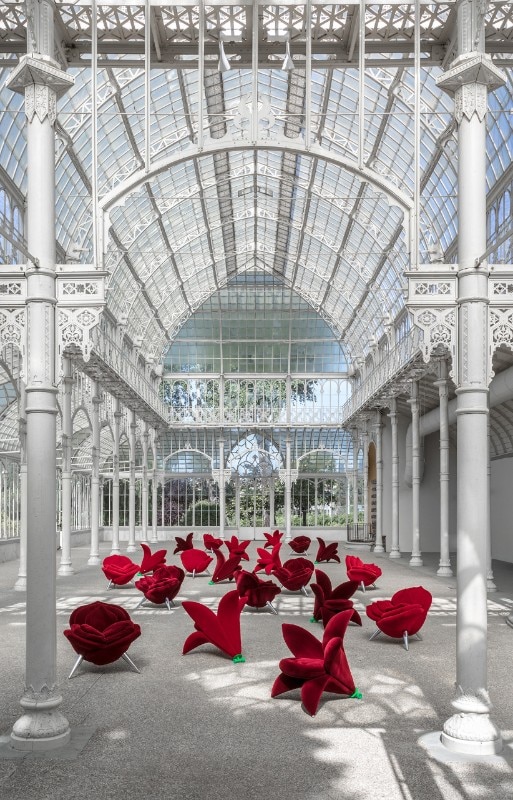Edra – it is said – is a crasis of esedra. The original meaning of the Greek word exedra – which later became used in architecture to refer to a semicircular recess placed on a façade – was an open-air environment intended as a meeting place. This idea of openness and dialogue embodies the destiny of the company’s products, photographed by Alessandro Moggi, Stefano Pasqualetti, Pietro Savorelli and Massimo Vitali across Tuscany. Portrayed inside historic palaces, theatres, museums, private villas, fortresses, gardens, beaches and marble quarries, Edra products establish an extraordinary dialogue with the space and blend in with the beauty of the landscape, architecture and history.

 View gallery
View gallery

In the image above: the sofa Pack by Francesco Binfaré, in its day and sun version, on the rocks of the Accademia in Livorno. Photo Massimo Vitali. In this gallery: images from the book "Our Story. A Journey through Beauty"

In the image above: the sofa Pack by Francesco Binfaré, in its day and sun version, on the rocks of the Accademia in Livorno. Photo Massimo Vitali. In this gallery: images from the book "Our Story. A Journey through Beauty"

In the image above: the sofa Pack by Francesco Binfaré, in its day and sun version, on the rocks of the Accademia in Livorno. Photo Massimo Vitali. In this gallery: images from the book "Our Story. A Journey through Beauty"

In the image above: the sofa Pack by Francesco Binfaré, in its day and sun version, on the rocks of the Accademia in Livorno. Photo Massimo Vitali. In this gallery: images from the book "Our Story. A Journey through Beauty"

In the image above: the sofa Pack by Francesco Binfaré, in its day and sun version, on the rocks of the Accademia in Livorno. Photo Massimo Vitali. In this gallery: images from the book "Our Story. A Journey through Beauty"

In the image above: the sofa Pack by Francesco Binfaré, in its day and sun version, on the rocks of the Accademia in Livorno. Photo Massimo Vitali. In this gallery: images from the book "Our Story. A Journey through Beauty"

Teatro della Pergola, Florence. It is the most ancient Italian theatre, built in 1656 on di Ferdinando Tacca's design, thanks to the patronage of del Cardinal Gian Carlo de' Medici. Open to the public from 1718, it hosted the operas by Mozart, Verdi, Donizetti e Mascagni. The Tatlin sofa by Mario Cananzi and Roberto Semprini awaits the audience in the foyer. Photo Pietro Savorelli.

After climbing on the stage dressed for the part, sofas and armchairs embrace their roles as actors. Photo Pietro Savorelli.

The armchair Chiara by Francesco Binfaré on the beach at Forte dei Marmi, Versilia coast. Photo Massimo Vitali.

Margherita chairs by Jacopo Foggini in front of A globe from the 1500s – the biggest ever built, in the Sala delle Mappe at Palazzo Vecchio, Florence. Photo Alessandro Moggi.

A red blooming of Giglio and Rose Chair by Masanori Umeda in the Tepidario of Roster, la the greatest Italian greenhous buit by Giacomo Roster in Florence during the second half of the 1980s. Photo Alessandro Moggi.



